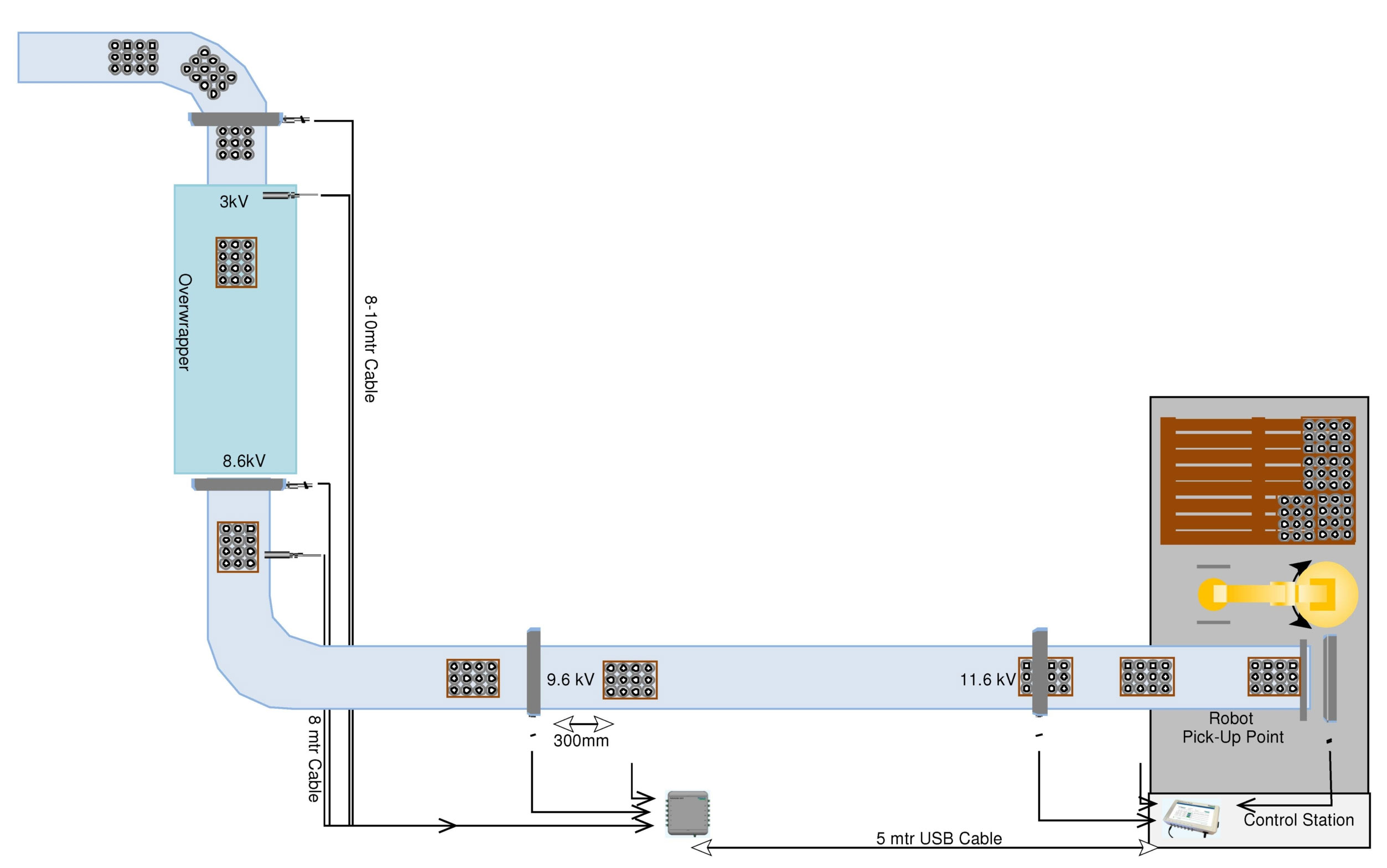
Uncontrolled static on packaging film increases fire risk and process faults.
Use Smart Control to monitor connected ionizers and closed-loop feedback sensors that neutralize residual charge in real time with historical logging and alarms.
Alarm outputs can interlock E-Stops, notify central systems, and trigger beacons/sounders to keep operators and production safe.

Static on the inner film attracts powders/dust into the seal area causing poor seals, cosmetic issues, and downtime.
Install a Model 915 Ionizing Bar before the forming tube to neutralize the inner web, with additional 915 bars just before the seal bars.
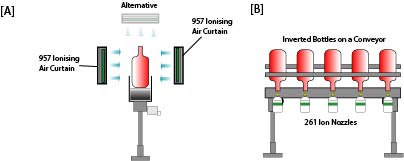
Water-wash systems add cost and leave residual moisture/contamination concerns.
Use Meech 957 ionizing air curtains and 261 nozzles to clean inside/outside surfaces without water. Fan-driven IonRinse is a compressed-air-free option.
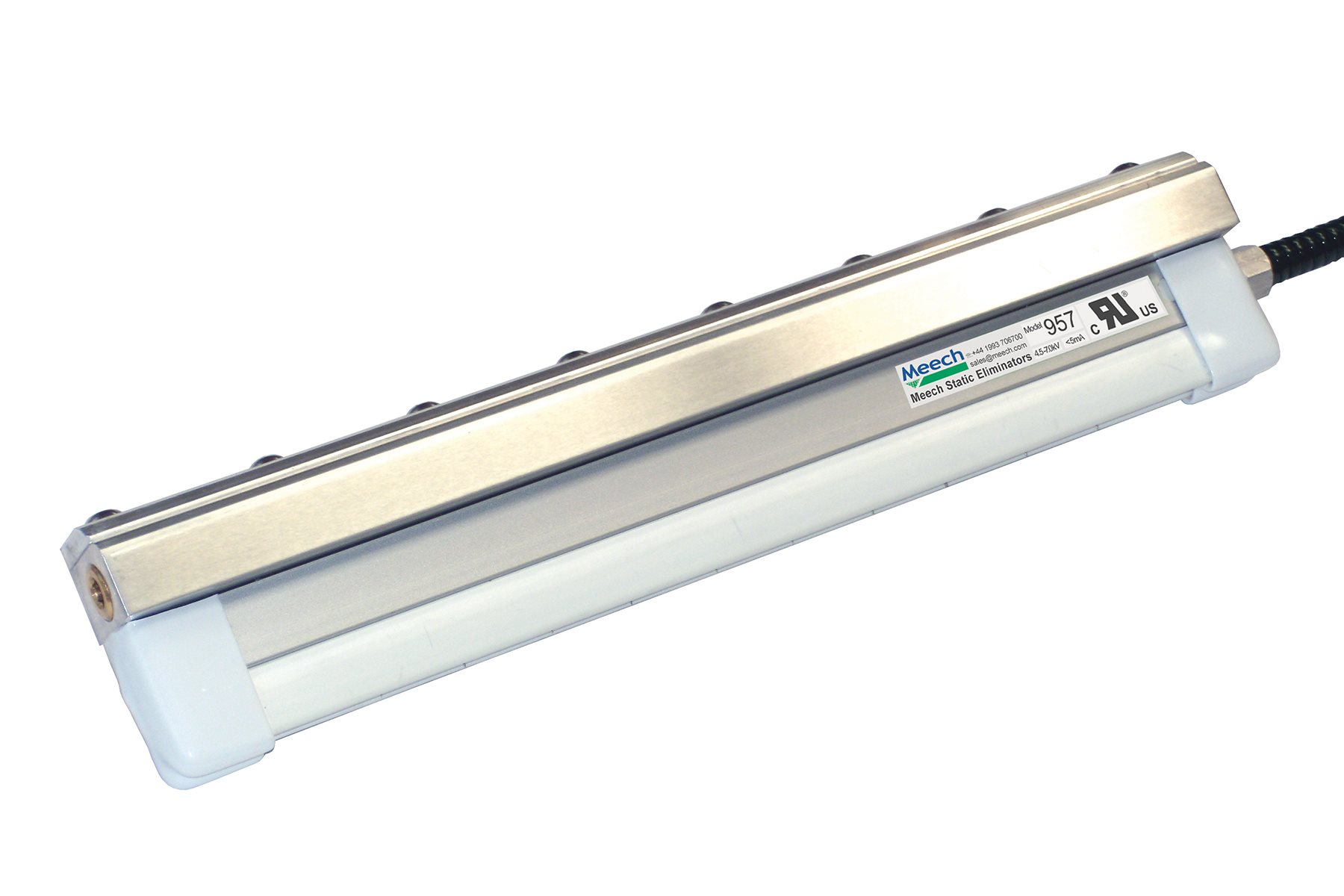

Static from thick film during unwind/form/cool attracts contaminants and causes forming/filling defects.
Clean contaminated rolls with Meech Non-Contact CyClean and control charges with long-range bars like 929IPS or 971IPS during packing.
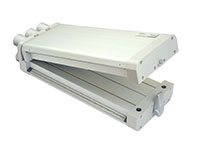
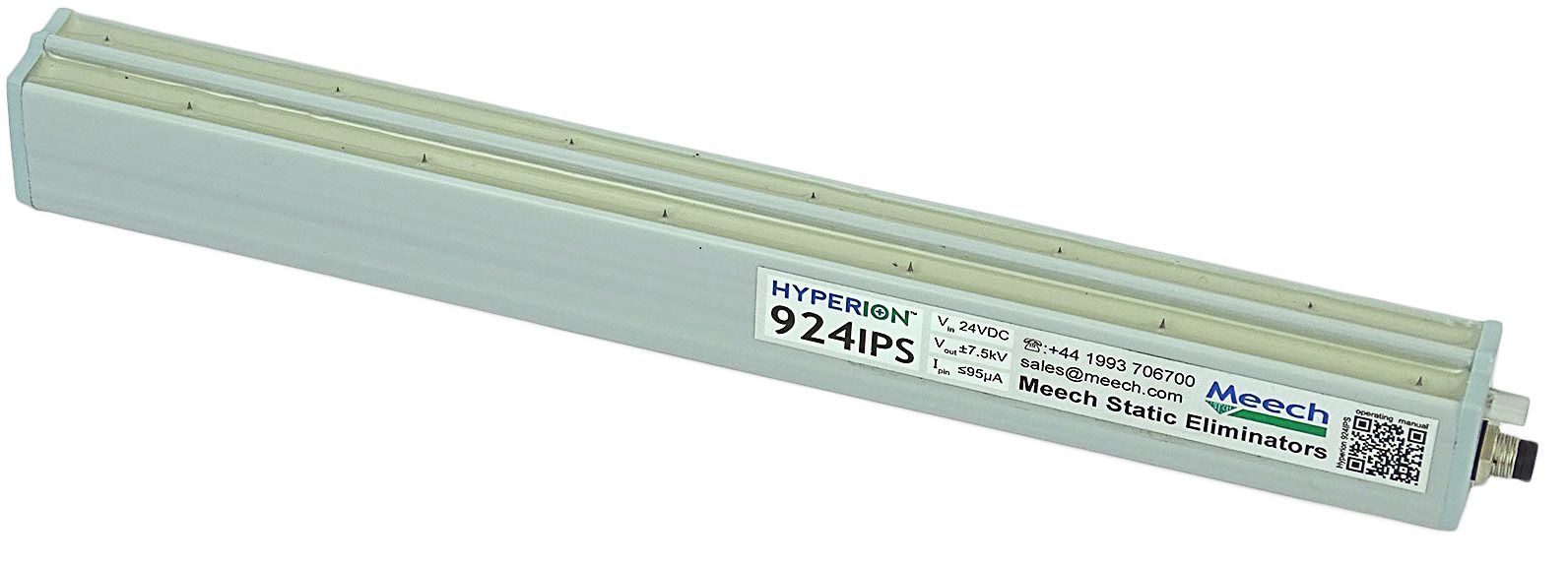

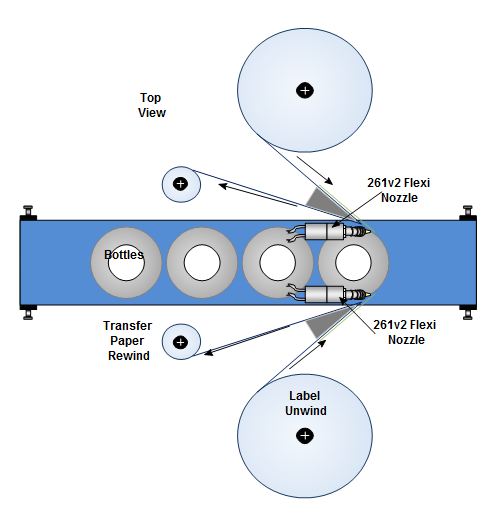
Static on labels leaving the release liner causes misalignment and creases.
Neutralize label and container at separation using a Model 261v2 Flexi Nozzle.
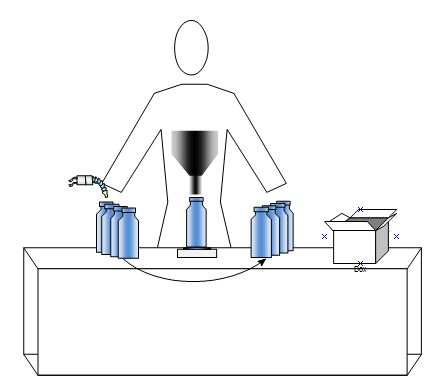
Charged powder clings to bottle rims and auger spouts.
Discharge the container and spout area using a 261v2 Flexi Nozzle with a 233 Pulsed DC Controller.
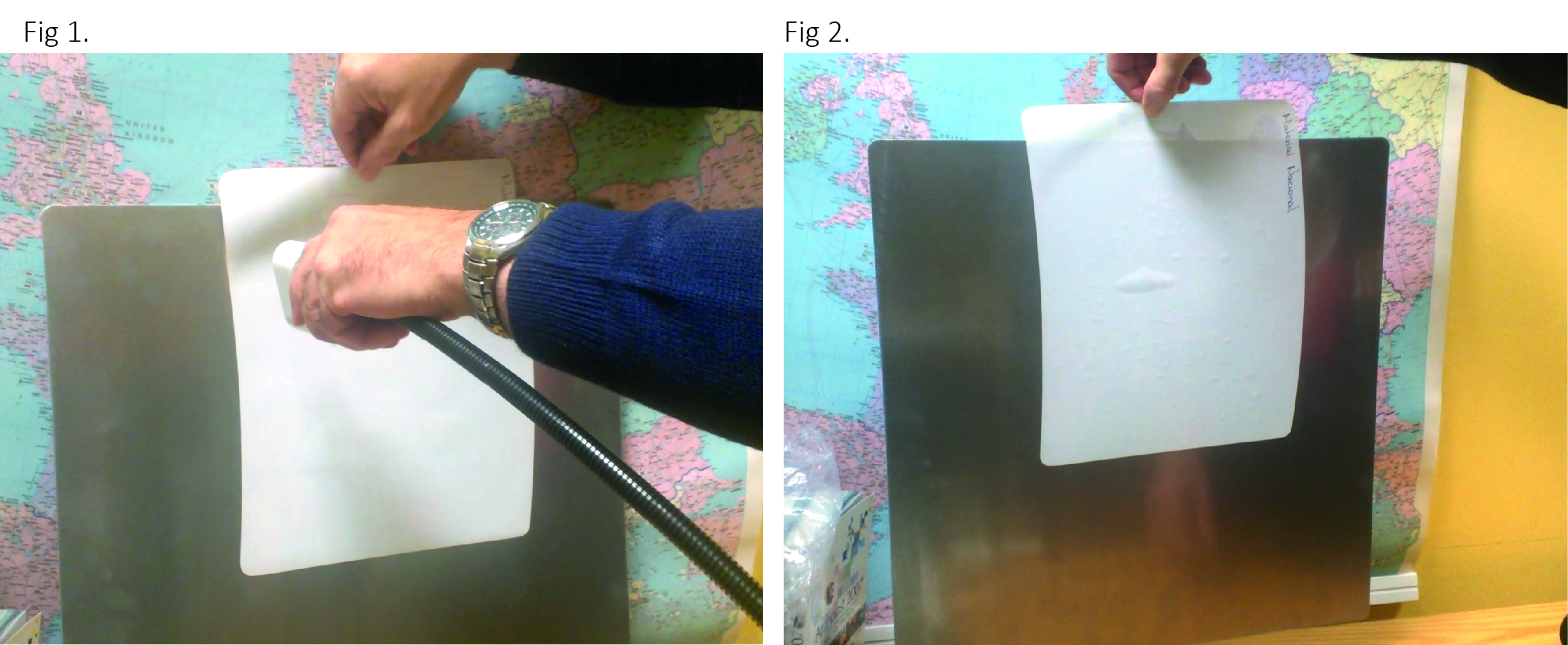
Conductive inks/metalized films can dissipate charge and reduce label adhesion to the mold tool; surface meters can miss subsurface effects.
Charge labels against a grounded plate (e.g., 800g aluminium) and evaluate hold/sparking. Use Meech B995R-IML-MAN-EXTEND & A994IML generator for batch testing, prototyping, and samples.
Standard 20–30 mm overlaps create wrinkles/costs; narrow overlaps can split during shrink.
Electrostatically pin the overlap to achieve neat 3–4 mm seams that survive shrink, saving material and improving appearance.

Sachets/literature slip before overwrap causing rejects and complaints.
Apply a controlled high-voltage pin immediately after placement so sachets adhere long enough for consistent wrapping.
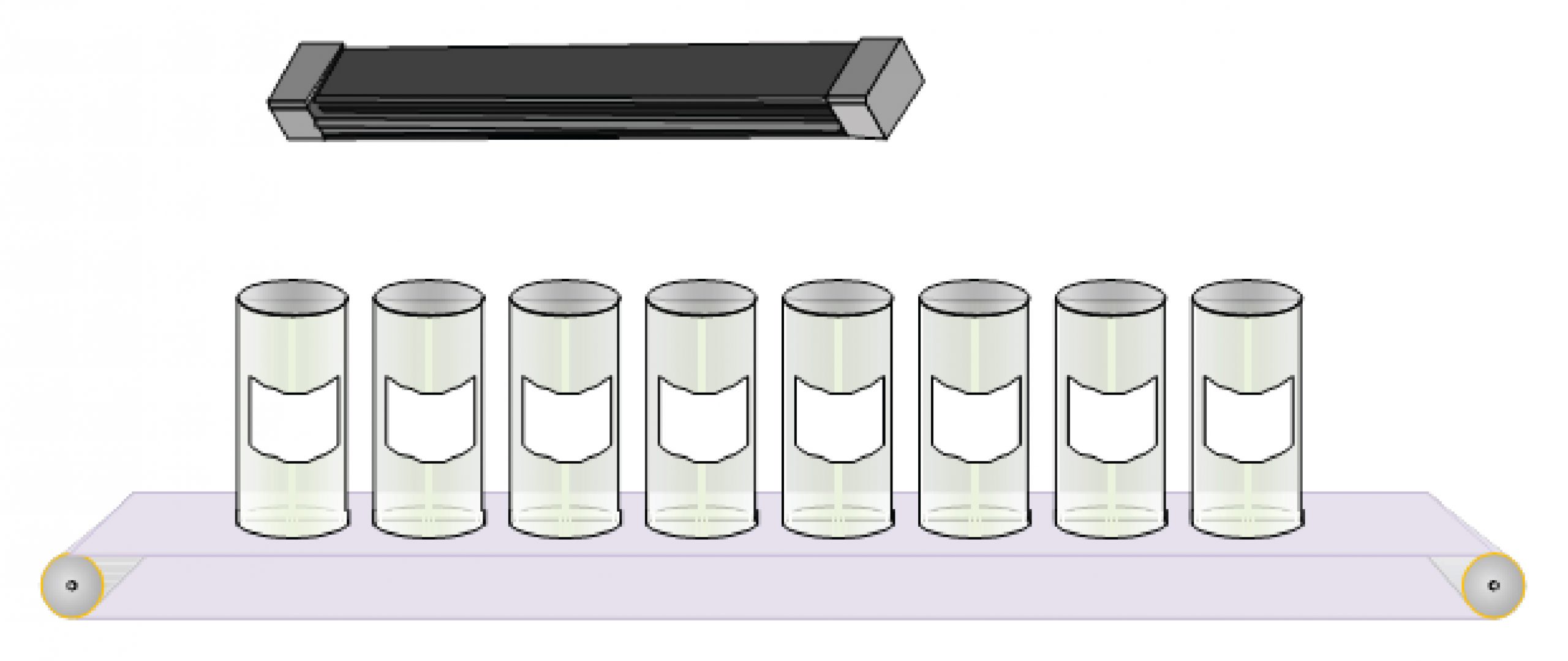
Conveyors charge cans/containers causing operator shocks, false metal-detector trips, weighing errors, and contamination.
Mount a Meech 929IPS Ionizing Bar over the conveyor to neutralize charge and reduce rejects.
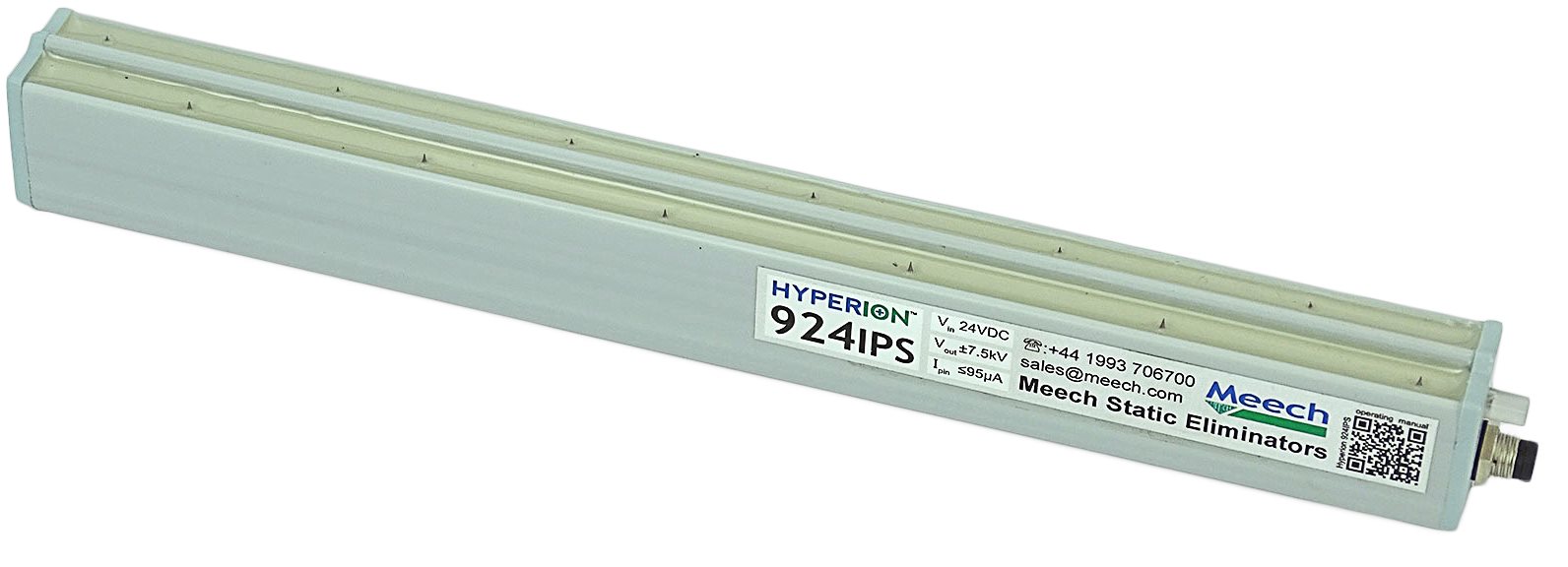
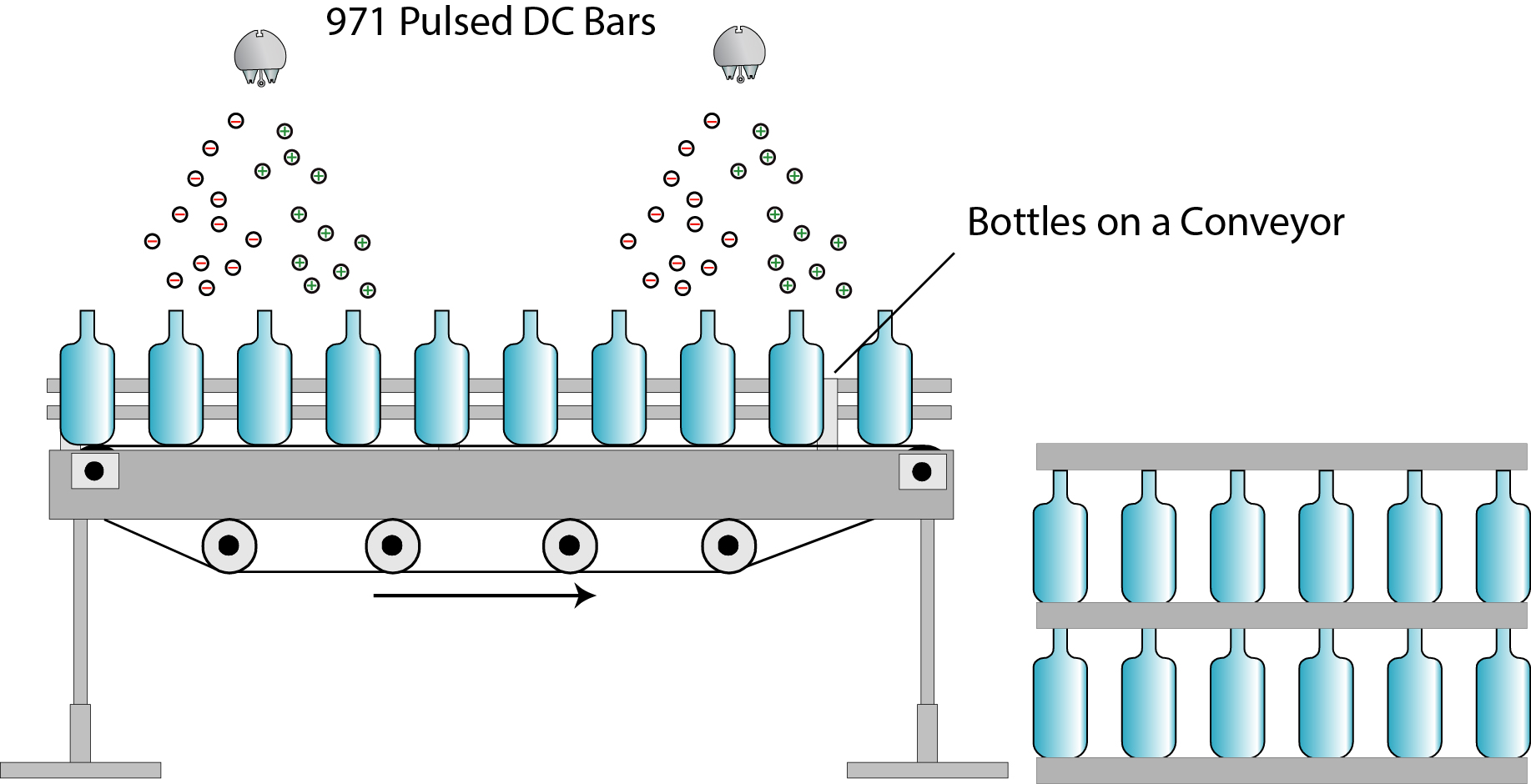
Blow-molded bottles carry high charge causing topples, contamination, and jams.
Neutralize at discharge and on collation table using a 971 system to remove residual/regenerating charges.

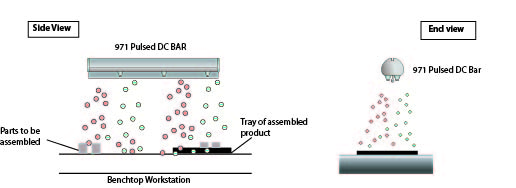
Operator clothing and handling charge parts leading to weighing and assembly errors.
Install a 971 Pulsed DC system above the work area to minimize charges on operators and product.

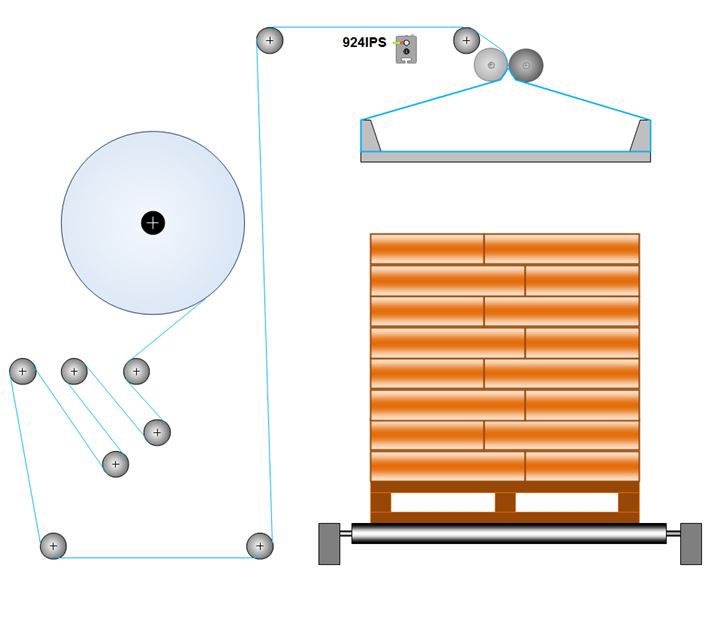
Static from unwind and blocking makes opening the layflat tube difficult.
Install a Hyperion 924IPS Bar ~20 mm from the web just before the final path roller to neutralize charge before the nip.
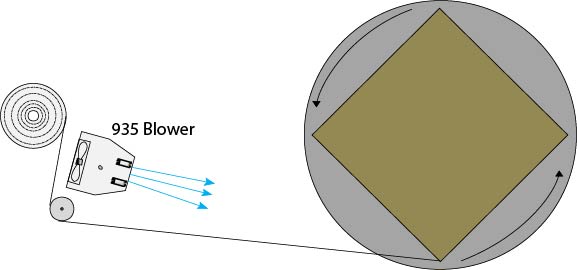
Risk of ignition around aerosols, dust attraction, operator shocks.
Neutralize the film as it is applied to the pallet—Meech 935 ionizing blower provides the throw for typical distances.
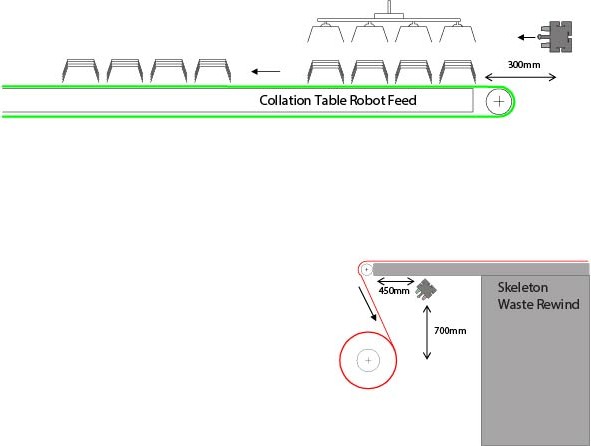
Cooling/stacking charges cause trays to repel and fall; rewound skeleton holds painful charge.
Neutralize on the collation table with a 935 blower (adds cooling) or Meech 971 system; discharge the skeleton with a 971 system.

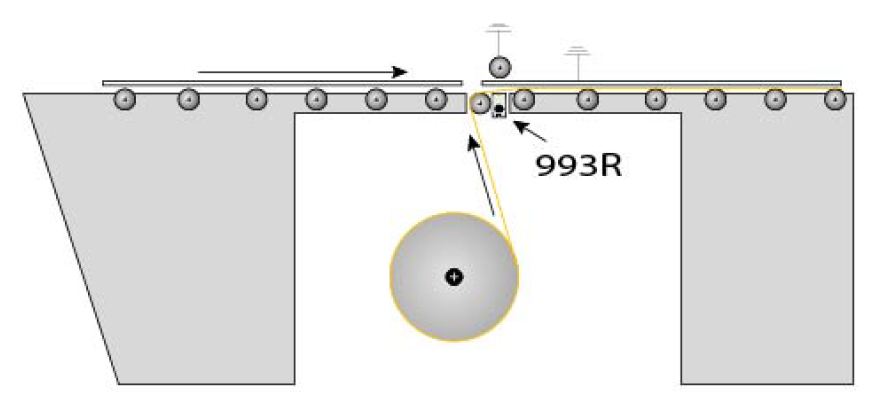
Sheets risk surface damage; manual interleaf handling slows production.
Electrostatically pin interleaf by passing sheet and film over a 993R bar. For insulative sheets, fit an earth reference opposite the bar.
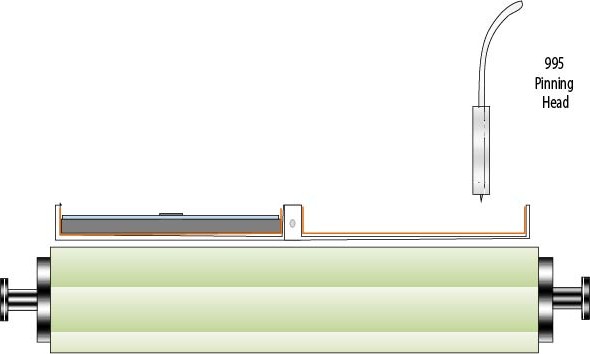
Inserts shift during closure and overwrap.
Apply localized electrostatic pinning using a single-point pinning head to hold the flyer in place with minimal charge.
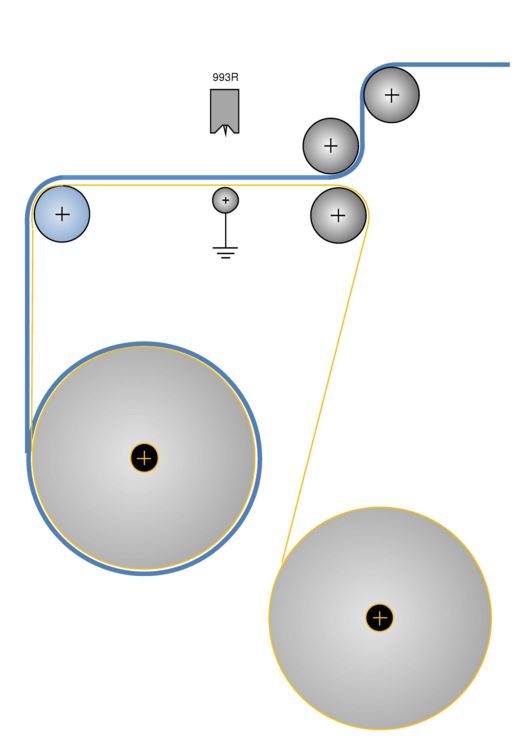
Need to add/remove protective layers or bond two webs before welding/slitting—without chemicals.
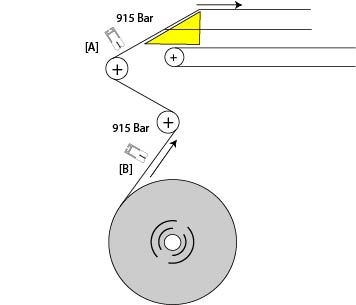
Film charges on guides/rollers and sticks to hardware or itself instead of conforming around the product.
Fit a 915 Ionizing Bar at point “A” to stop wraps on rollers and at “B” if film sticks while forming.
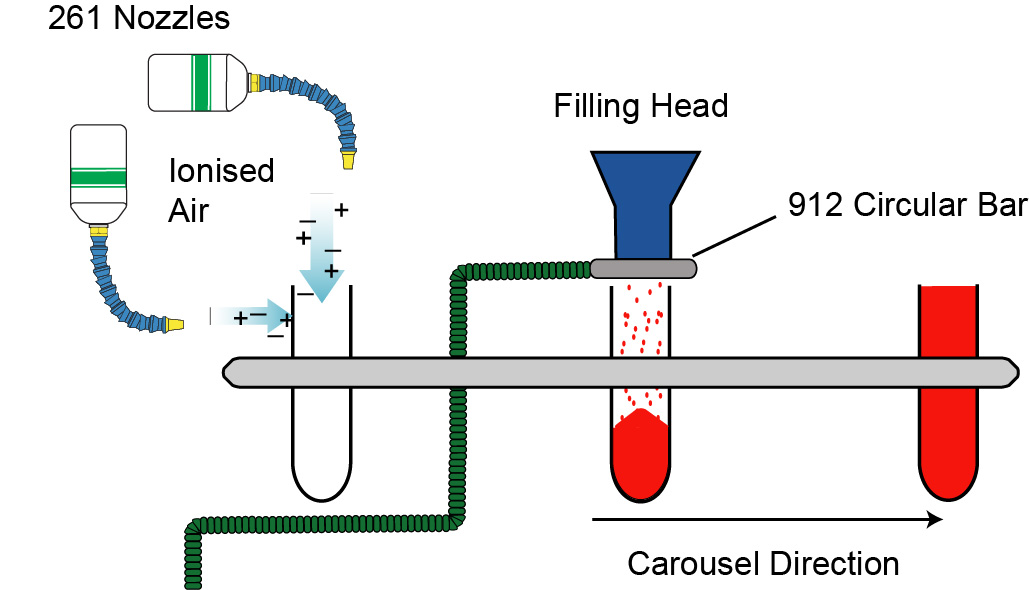
Powder coats inner/exterior walls and filling head causing incorrect fills and contamination.
At the station before fill, use two 261 Nozzles (interior & exterior). Fit a 912 Circular Bar around the filling head to stop powder buildup.
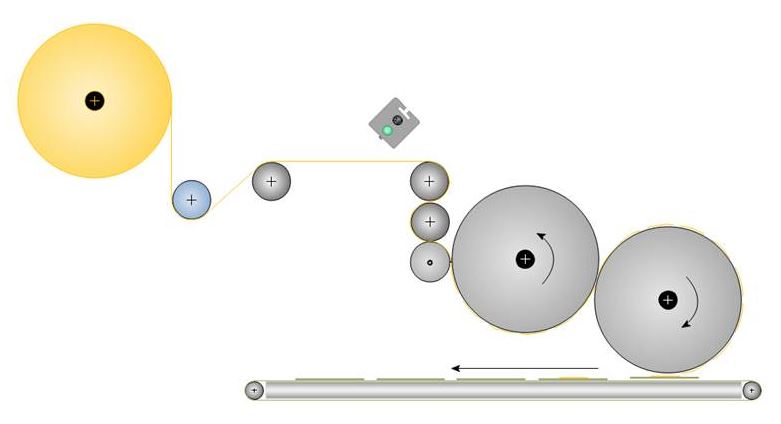
Cellophane and similar films charge during unwind and at the rotary knife, sticking to knives and drums.
Mount a Meech 924IPS Bar above the web before the knife to neutralize charge. 924IPS runs from a convenient 24 V supply.

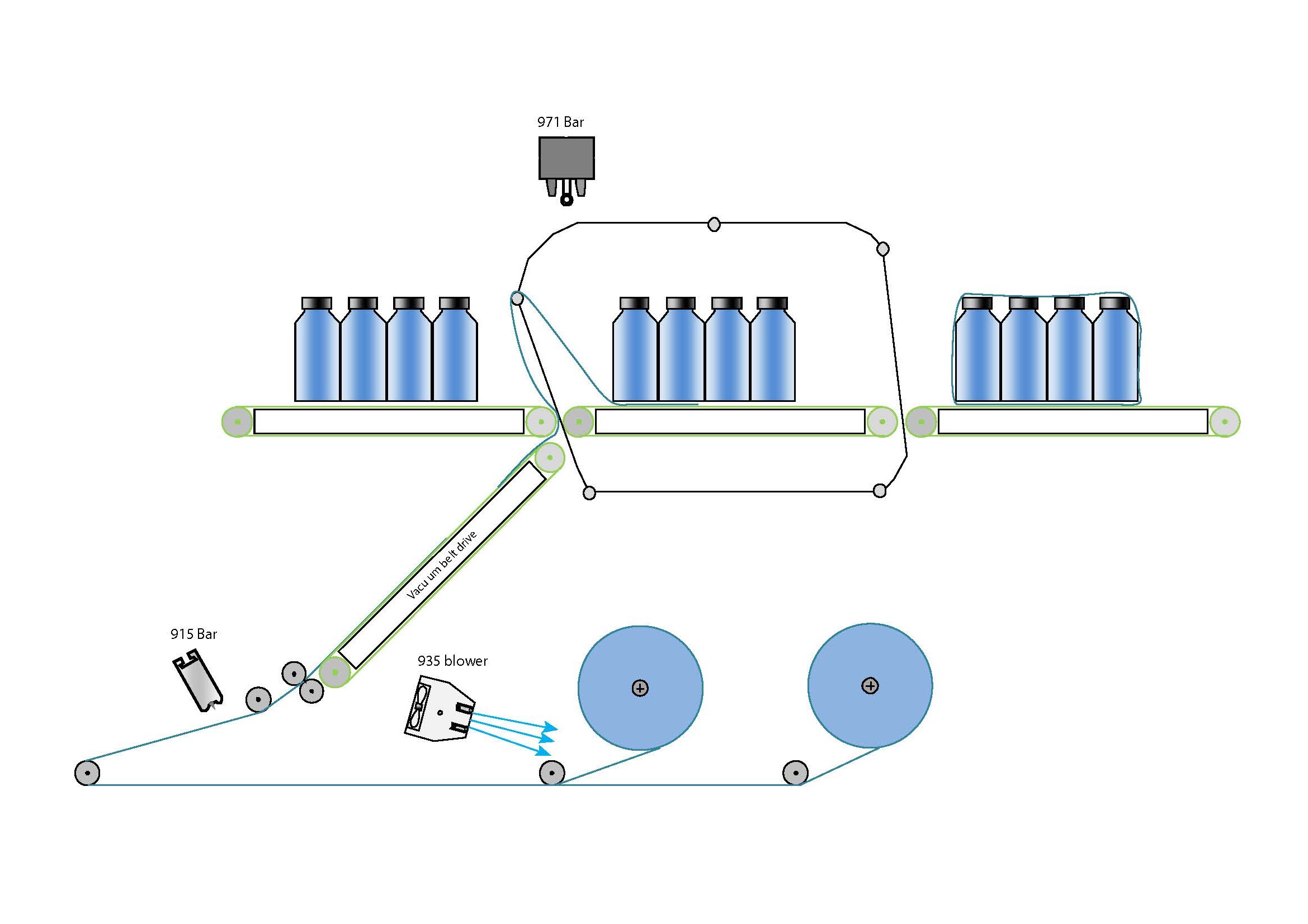
Dust attraction during unwind, web sticking to knife/vacuum belt, and sheets sticking to themselves during wrap.
Use a Meech 935 ionizing blower at unwind to control dust; a Meech 915 bar before the sheeting knife; and a Meech 971 bar to prevent sheets pulling from under containers.